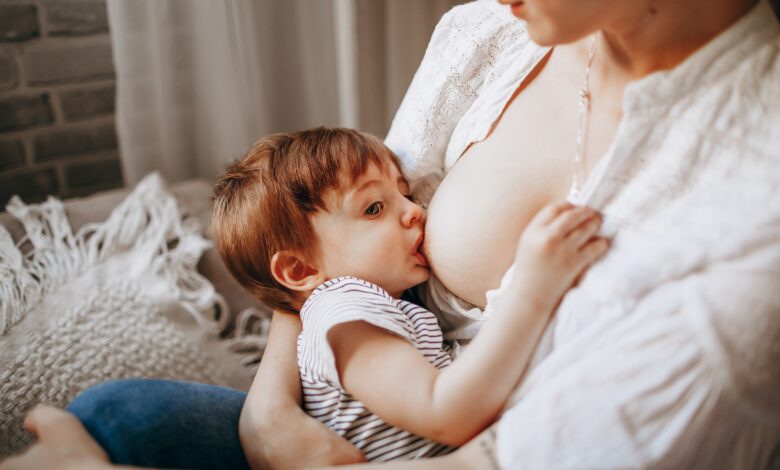how to measure the quantity of milk for baby during breastfeeding?

How much milk does a breastfed baby drink? Are the quantities he suckles daily sufficient? For parents of a breastfed baby, these questions are both common and normal! After all, where the parents of a bottle-fed baby can know exactly what their little one is absorbing, the finding is much less obvious in the case of breastfeeding. And yet, there are simple ways to make sure your baby is drinking enough.
How much breast milk does a full-term baby drink?
Before trying to measure how much your baby is drinking, a quick review of daily milk intake is in order. In breastfed babies, as in bottle-fed babies, these nutritional needs evolve progressively (see table below). In particular, during the first few days of life, there are two important stages:
- On the third day, the milk comes in: the colostrum is replaced by breast milk, produced in greater quantities.
- On the 15th day of life, milk production reaches its “cruising rhythm”: the infant drinks the same quantity of milk (or almost) every day until he is 6 months old.
| Age | Quantity of milk per 24h | Amount of milk per feeding |
| J0 | Between 25 and 56ml | 6 ml |
| J1 | Between 113 and 185 ml | 12 ml |
| J2 | About 200ml | 22 to 27ml |
| D2-D3 (period of milk coming in) | About 400ml | 36 to 50ml |
| J4 | About 600ml | 50 to 75ml |
| D15 – 6 months | Between 750 and 800 ml | 66 to 100ml |
Please note: these figures are indicative and may vary depending on the baby. And for good reason: the amount of milk absorbed by a baby when breastfeeding can be as much as 1.3 liters of breast milk per day, especially for large babies (born at more than 4 kg).
Why doesn’t a breastfed baby need the same amounts of milk as a bottle-fed baby?
These quantities may seem very small to breastfeeding mothers, especially since a baby fed with artificial milk consumes a little more volume. For example, the recommended volume of formula for an infant during the first month is 90 ml per bottle, six bottles per day, then six 120 ml bottles the second month, etc.
How can this difference be explained? It’s all a question of composition, as Carole Hervé reminds us: “breast milk contains specific proteins that are not found in artificial milk and that regulate appetite through the secretion of two key hormones: leptin and ghrelin. This also explains why a breastfed baby absorbs 15 to 20% less milk than a baby receiving formula, for the same caloric intake!”





